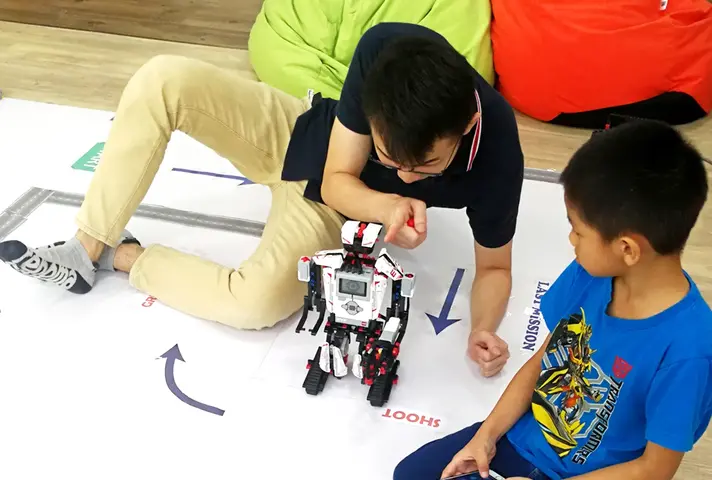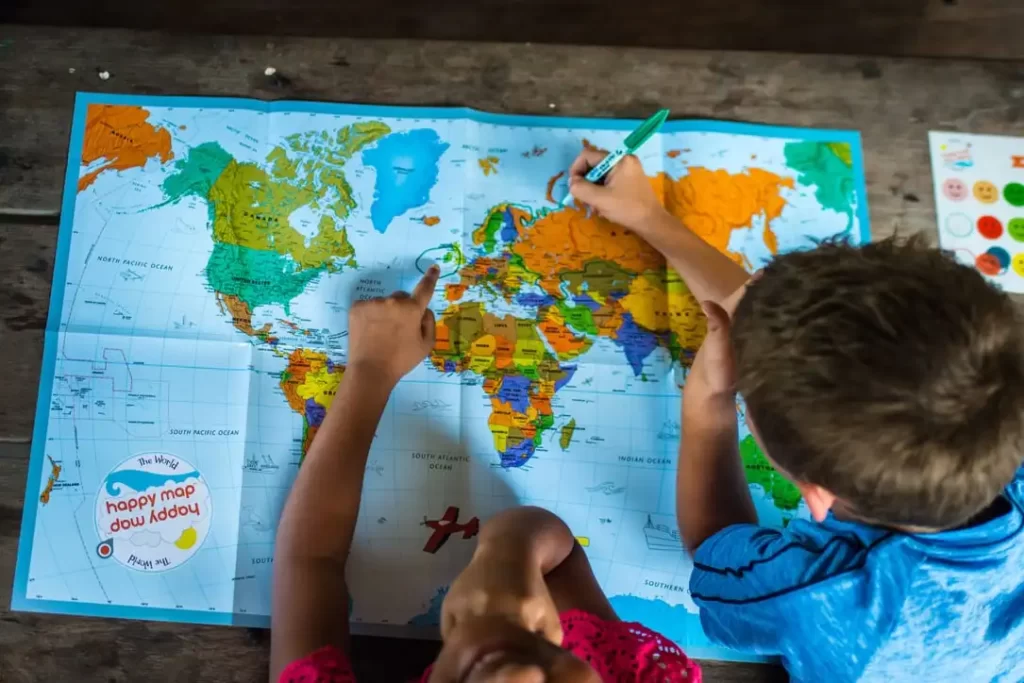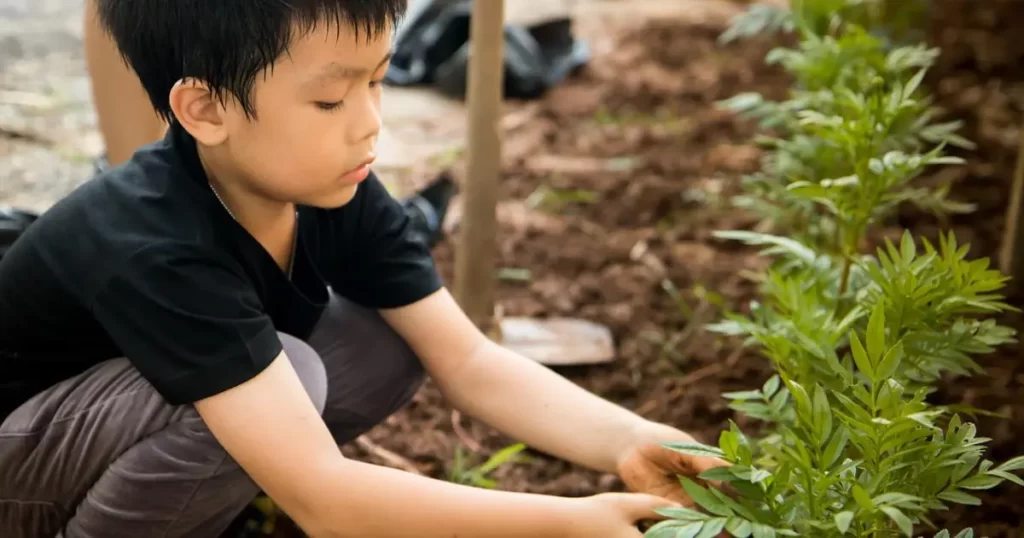Whether we realise it or not, we all use mathematics in our daily lives. Math may be found in some of the most improbable locations if you look hard enough. Mathematics serves as a universal language for our world, aiding us in comprehending and constructing our surroundings.
Moreover, it plays a crucial role in nurturing the imaginative capacities of children, enabling them to transform their dreams into tangible accomplishments, be it through engaging in games or expressing themselves through music.
Below, I will show you several math games that can help your child learn math while engaging in real-life games. However, these games still require some basic math skills. If your child finds them challenging at first glance, you can start by teaching them using the following guide: How to Teach Math Easily: 6 Most Effective Steps.
Let Your Child Put Math to Practical Use

1. Purchasing
Engage students in activities that involve budgeting, calculating discounts, and comparing prices while shopping for groceries or planning a party. This hands-on experience will reinforce their understanding of decimals, percentages, and financial literacy.
Game Example:
- Set up the grocery store by arranging the items, attaching price labels, and displaying the healthy food list.
- Explain the rules of budgeting and making healthy choices to the children.
- Allocate the capital by distributing play money or announcing the amount each child has.
- Begin the game by instructing the children to explore the store, compare prices, and choose the items they need.
- During shopping, children can “buy” items, make healthy choices, and calculate their expenses.

2. Robot Car Challenge
In the Robot Car Rally Challenge, your kids must navigate their robot cars through a series of obstacles and complete various missions to earn points. The goal is to accumulate the highest score possible within a limited time frame.
Game Example:
- Select desired robot car: choose from a range of different robot car designs, each with its own unique abilities.
- Design a mission: Make missions, such as collecting objects, reaching checkpoints, or solving puzzles.
- Navigate the course: Use the provided controls to manoeuvre robot car through a challenging course filled with obstacles and twists.
- Complete missions: Use robot car’s capabilities to accomplish the designated missions within the given time limit.
- Earn points & get rewards: Receive points based on performance and completion of missions. Reward them. See the right way to set up a reward system for kids.

3. Architectural Adventures
Ask your child to design a floor plan for a house or create a blueprint for a structure. They can use geometry concepts to calculate dimensions, areas, and volumes.
Game Example:
- Set up the Lego brick display: Separate and label different Lego brick shapes with prices.
- Explain the rules: Kids have a stated amount of money to spend on bricks. They must buy the required bricks without exceeding their capital.
- Allocate the capital: Distribute play money or announce the amount each child has.
- Begin the game: Kids choose bricks, compare prices, and make calculations to stay within their budget.
- Design their dream house: Children use their creativity to build and draw their dream houses using the purchased bricks.

4. Travel Planning
Have your child plan a vacation, considering factors like distances, travel time, and budgeting for expenses such as accommodation, transportation, and meals. This activity will introduce them to concepts like measurement, estimation, conversions, and financial planning
Game Example:
- Start by letting each kid choose their dream destination.
- Give each child a budget for their trip. They can be given a fictional budget in play money or use their creativity to decide the expenses.
- Research the costs and travel time for each option.
- Explore traditional dishes, snacks, and even try their hand at creating a menu.
- Have kids add up their estimated expenses, including accommodation, transportation, meals, and any additional activities they want to include.
- Let each child present their travel plan to the group. They should ensure they stay within their budget.

5. Recipe Conversions
Ask your child to convert a recipe to serve a different number of people by adjusting ingredient quantities. This activity helps reinforce fraction and ratio concepts.
Game Example:
- Gather a selection of kid-friendly recipe cards or print out recipes from children’s cookbooks or websites. Choose recipes that have simple measurements.
- Divide the kids into teams of two or more, depending on the number of players. Each team will work together to convert a recipe.
- Hand out one recipe card or printed recipe to each team. Make sure each team has a different recipe to avoid duplication.
- Explain the challenge to the teams: They need to convert the measurements and quantities in the given recipe to different units or servings. For example, if the original recipe calls for 2 cups of flour, they could convert it to 16 tablespoons or 500 milliliters.
- Give each team a set amount of time to complete the conversion. You can set a timer for 10-15 minutes, depending on the complexity of the recipe.
- Encourage the teams to work collaboratively and use their mathematical skills to calculate the conversions accurately. They can make use of conversion tables or online resources to help them with the calculations. Provide measuring cups and spoons for them to visualize the conversions.

6. Gardening
Engage your child in gardening activities where they measure and calculate areas for planting, estimate quantities of seeds or fertilizer needed, and monitor growth rates.
Game Example:
- Begin by designing garden layout. Choose from a variety of plants to create dream garden.
- Before planting, kids should solve math problems related to soil acidity or nutrient ratios to create the perfect growing environment for plants.
- Select seeds based on their growth patterns, germination times, and mathematical characteristics. Solve math puzzles to determine the number of seeds to plant and the spacing between them for optimal growth.
- Determine the right amount of water and fertilizer needed for each plant by solving math problems related to ratios, fractions, and measurements.
- Keep track of plants’ growth progress by measuring their height, leaf counts, or the number of flowers or fruits they produce. Use math skills to calculate growth rates, compare plant sizes, and predict future growth based on the data collected.
- Once your plants are ready for harvest, use math skills to determine the yield and calculate profits. Solve math problems related to pricing, discounts, and profit margins to make sound business decisions.
Superb posts!